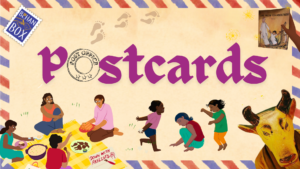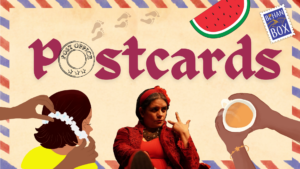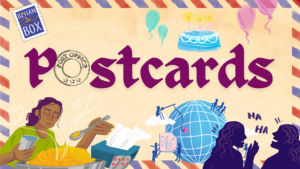Postcards: From Sudhir Patwardhan’s Bombay to a Post-Revolution Cairo
This month in Postcards: a feminist march, cookbook for one, and women’s labour powering papal decision making.

Dear reader, we write to you about the people, places, and ideas that brought team BehanBox joy this month. One postcard, every month.
Between Dreams and Reality: Finding a Home of My Own
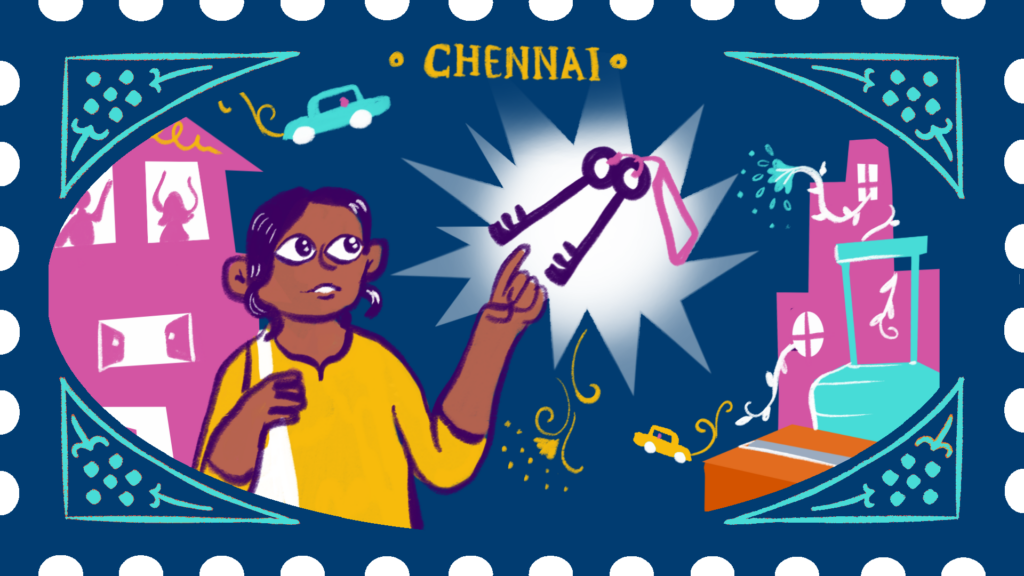
In February, Chennai seemed to have no room for three unmarried women – related, not by blood, but by love and friendship. My two female flatmates and I scoured the city for a home to rent, someplace close to work, had ‘chill’ owners, and where we could find decent sunlight so as to not wilt. It took only a week for us to be convinced of the impossible nature of this quest: we were met with side-eyed judgement, heavy pauses, and classic responses to being ‘lady bachelors’. Madam, we don’t want problems. Madam, this is a family building. Will gents be coming here? Can we speak to your father? Some found our presence disruptive and dubious altogether. Male UPSC candidates live in this society, how will they study with you all here? Or, why are you still unmarried? We felt like we were in an absurdist comedy. No, really, imagine this. Three people walk into a city looking for a home. A journalist, psychologist, and designer. What happens next? The owner realises they are unmarried women, and shoos them away. The end.
After four failed house visits, I sat on the pavement one sweaty afternoon, boiling with rage. I kept thinking about the “condition of Indian womanhood” and what it takes to be a woman in a city. Just as Begum Rokeya did a century ago. She published ‘Sultana’s Dream’ in The Indian Ladies Magazine in the 1990s (the publication’s office is located on Triplicane in the city). Rokeya’s was a feminist utopia, a ‘Ladyland’ with solar ovens, flying cars, and no men. Arguably this utopia was confined to those with privilege and was reductionist in its framing of gender hierarchies. But in that moment, Sultana’s dream-like spell overtook me and I retreated into Ladyland. This version had a space for me and the three of us; no one questioned our identity, relationships, work. The thought of Rokeya’s Sister Sara coming to rescue us was oddly comforting.
We found a home at last – after weeks of negotiation, obsessively scrolling through NoBroker, and calling 60-odd numbers. Here, among half-packed boxes, three of us crouched on a balcony and drank our first cup of adrak wali chai. It was nothing like Rokeya’s Ladyland but I could see a utopia taking shape: the gingery taste of home, protected by the joy of living and creating space with women. For those who seek to retreat, for now, there’s a game called Sultana’s Reality.
Archita Raghu
In Cairo, Rethinking Hope, Memories and Revolutions
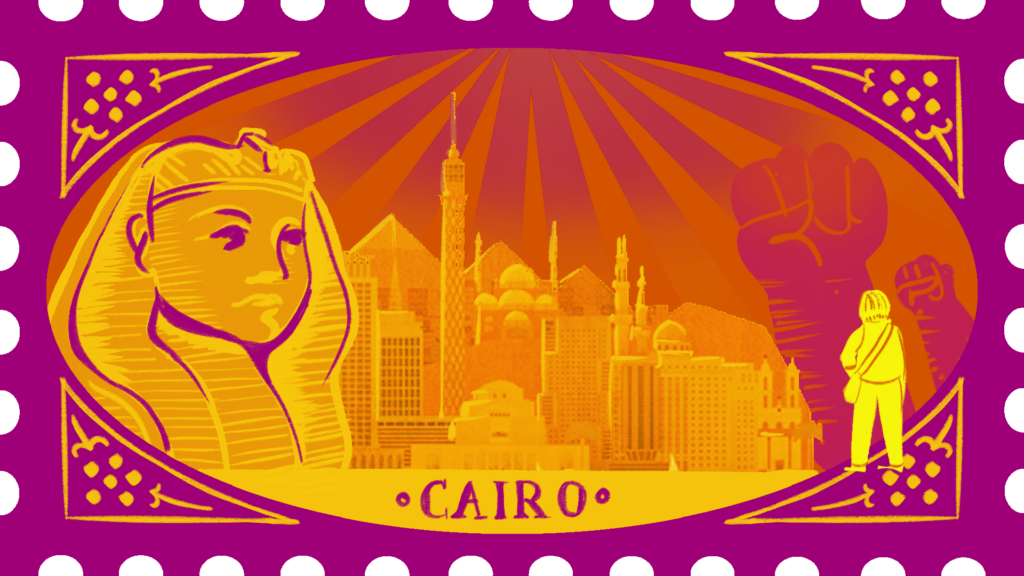
It was with a mix of excitement and trepidation that I boarded the flight to Cairo. I was returning to the city after 14 years. How will my memory of the city meet with reality?
I first visited Cairo just 11 months after the Egyptian revolution. It was a time of jubilation, from Cairo in the north to Aswan in the south. Egypt was second in the Arab Spring series where people rose against dictators. Egyptian people had achieved what seemed insurmountable – they had overthrown the authoritarian Hosni Mubarak in a bloody uprising. “Our Revolution” said Muhammed, the owner of a houseboat in Aswan, stroking his chest. In those heady months, his Nubian identity, one that had a complicated relationship with the Arab majority, seemed inconsequential. Identities once fractured, had now come together as Egyptian. The euphoria even spilled over from neighbouring Libya. In a buzzing, old Egyptian cafe in Khan-e-Khaleeli market in the heart of Islamic Cairo, a Libyan family of holidaymakers proudly showed me footage of the decapitated head of the dictator, Muammar Gaddafi, from a few weeks earlier. Some young students continued to defiantly camp at Tahrir square, the heart of the revolution, amidst heavy barricades. That evening the police opened fire on them. No one spoke of hopes for a post revolution future. They lived in that moment of victory. I took home that moment and memory with me.
So now, I was afraid to probe if the post-revolution democracy squared up to people’s aspirations. So I made the choice to be just a tourist this time and admire the many layers of Cairo’s 6,000-year-old history. The minarets of the many mosques stood sharp over the Cairo skyline (It is the city of a thousand minarets after all). I strolled through the Khan-e-Khaleeli’s pecheeda daleelon si galiyan (borrowing from the great Gulzar’s description of Ballimaran in Chandni Chowk) without the burden of wanting to understand Egypt’s new reality. The evenings were alive with prayer and Iftar during the holy month of Ramadaan. The roads were definitely wider and there were many more flyovers than what I remember. On the way to Giza, there were matchbox type, candy hued, uneven apartment blocks, perhaps social housing, named after – who else – the Pharoahs. Tahrir was now a beautiful and clean picnic spot flanked by the Nile Ritz Carlton, Marriott and the Egyptian museum. Inside the museum, Tutankhamun’s mask and other belongings, once housed in a large, airy gallery were now confined to a dark room and spotlit.
But one evening, on my last cab ride, I gave in. I asked Minna, the cab driver, what changed after the revolution. “Some good, some bad,” he said.
Tell me about the good.
The minimum wages have gone up by 200%, he said. His wife, a schoolteacher, who earned 300 Egyptian Pounds in 2011, was now earning 7,000 Egyptian.
What’s bad? (I had to ask).
“Corruption.”
Bhanupriya Rao
A Gender-Bending Twist In a Papal Conspiracy Movie

‘EMINENCES!’ A woman’s voice roars and the hall quietens. And then dropping several decibels, almost obsequiously: “Eminences!” Those probably are among the dozen-odd lines Isabella Rosselini gets to speak in appearances not totalling more than 10 minutes in the 2024 papal election conspiracy film, Conclave. And while Ralph Fiennes got the most attention for playing a conflicted cardinal at what is described as the world’s most secretive gathering, it is she, as Sister Agnes and her poker-faced flock of nuns, who make and break the plot.
The reverends, all men of course because women cannot hold the high office, stride across the screen in plush scarlet cloaks, cassocks and high hats, plotting, planning and negotiating who takes charge of the spiritual empire. There is some decidedly unspiritual stuff going on that could put Indian elections to shame. But around them is a totally invisible army of nuns, housekeeping the conclave. They walk quietly in single files, making no eye contact, in starched habits and wimples, organising tables, keeping offices orderly, running the kitchen and making sure that the notables have all that they need to make world shifting decisions. Basically, how all corridors of power work elsewhere too.
But what upends the status quo in the film is also a woman. “Although we sisters are supposed to be invisible, God has nevertheless given us eyes and ears,” says Sister Agnes, the cold iron of her soft voice cutting through the voices of the squabbling highnesses. It would be unfair to give the ending away but suffice it to say that for me, it was deeply satisfying that the movie closed on a shocking gender bending note. The nuns find some semblance of justice, the guilty are shamed, and the deserving get to wear the crown.
Malini Nair
Lost In A Forest, I Found Strength in Friendship
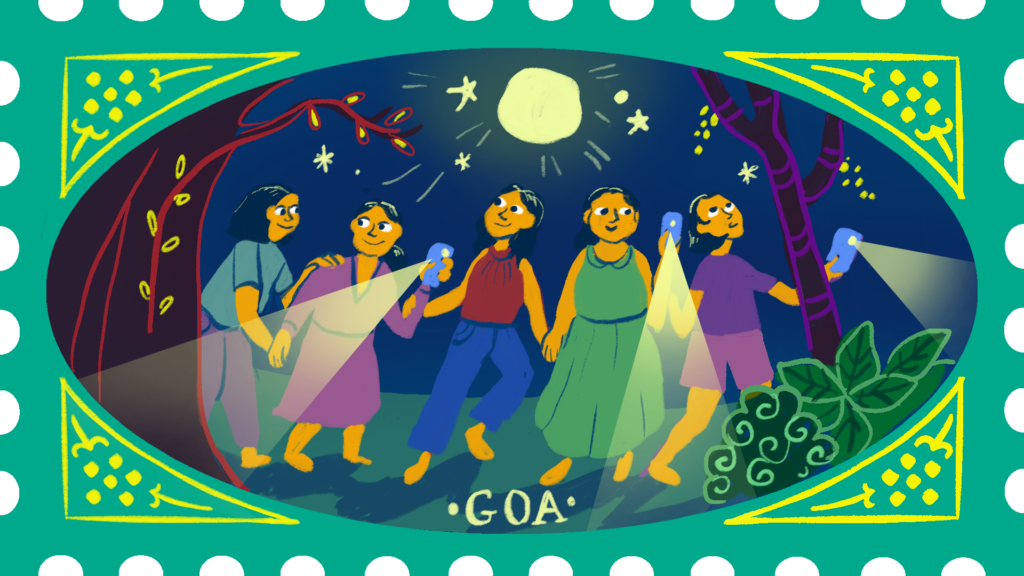
Last month, I visited the Khama Kethna Eco Village in South Goa’s Agonda region for a reunion. Spread across a 12-acre forest with rooms, dormitories, creative workshop spaces, a cafeteria, and more, I was longing to spend time in nature—to talk to the trees, observe the leaves and flowers.
One evening my friends and I, all fierce feminists, lost track of time as we were immersed in our chats, sharing our joys, sorrows and frustrations. It was well past midnight, and we had to make our way to our rooms through pitch dark lanes and without any clear signboards. We decided that all five of us would walk together and drop each other to our respective rooms, one by one, which also meant that one of us would have to walk back alone. Using our phone torches, we set off, accompanied by the sounds of crickets; the beautiful moon and stars shone from above.
I don’t believe in ghosts but the eerieness of the forest crept up on me. But, the company of four strong women and the belief that I would not be abandoned was assuring. Gradually, I could feel my fear of the darkness beginning to fade. We walked for over an hour and a half, but my room was nowhere in sight. I knew we had lost our way and with no internet to help us. Panic set in once again as I was fighting my fear of the night. Once again, it was the calm reassurance of my friends that calmed me.
Imagine five women, defeating the fear that haunts them, walking in a line through the dense jungle in the midnight, their phone torches lighting the way. It was as if five stars had descended from the sky and were creating a new path in the darkness.
We found my room at last. That night, as I conquered my fear, I saw the beauty of the forest —the silhouettes of the trees in the moonlight, thick layers of fallen leaves beneath my feet and an endless orchestra of crickets. And most importantly, I discovered strength in the five of us undertaking this unexpected journey together.
Priyanka Tupe
The Calm and Chaos of Sudhir Patwardhan’s World
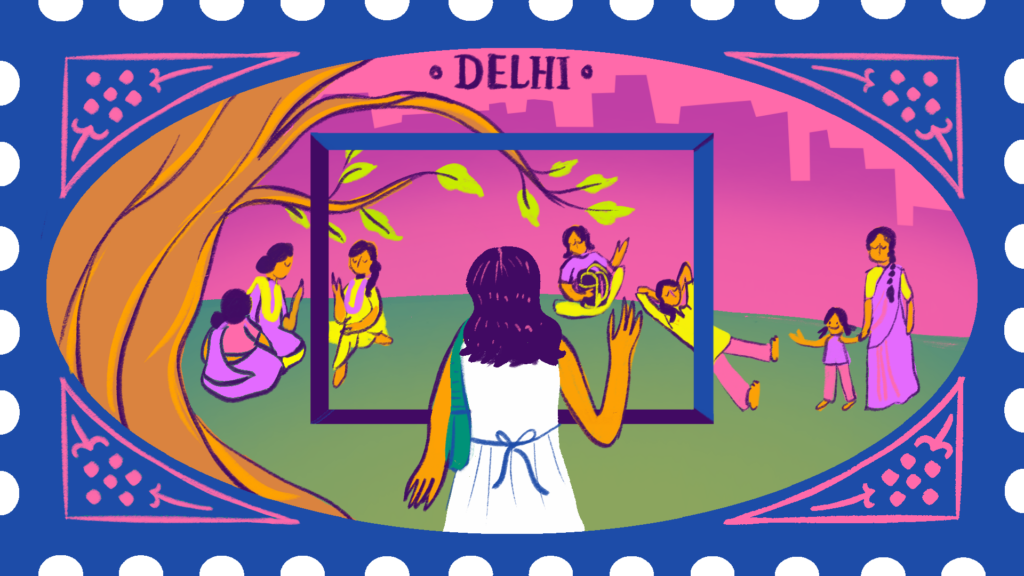
A sanguine Saturday afternoon, Delhi’s retreating winters, the promise of spring. In the beginning of March, I made my way down the leafy roads of Defence Colony to visit Sudhir Patwardhan’s art. On display, his exhibition, Cities: Broken and Built, a curation of over 65 works illustrated in strokes colourful and monochrome, over canvases big and small. I don’t remember how or when I first discovered Patwardhan’s world (did you know he was a radiologist?), but his pen and perspective have fascinated me for years. Perhaps it has something to do with Bombay – his muse – and a city that was my home for almost three years. Or maybe it’s the way he renders cities and people with grim intimacy, capturing aspirations and alienation that define many people’s experiences. In Cities: Broken and Built, canvases showed the motion and stillness of city life; people standing next to metros and concrete buildings; on highways and next to demolished homes. People in his frames didn’t look at each other but were silent companions in a shared sense of despair and dismay. One painting in particular held my attention: of a woman clad in a pink salwar suit, standing in a Mumbai local, looking longingly at nothing in particular. Something about her face and eyes suggested a lingering grief. At the entrance of the art gallery was a collection of books about Patwardhan’s works, and I was leafing through Ranjit Hosokte’s essays when I saw a painting titled ‘Holding Plait’. This woman faced the other way, wearing a blue saree and a red blouse, her back to me. One hand held onto a bag, the other clutched her braids. It seemed at once as if she were holding something back but also asserting her agency. I wanted to know what she sees, and thinks.
A few days later, I was reminded of the women in Patwardhan’s world as I walked in my neighbourhood park. Located in the heart of a residential colony, this park is a place of rest for domestic workers. These women do not have a permanent site of labour. The nature of their work means they hold a mental map of the city in their palms while knowing that these spaces don’t always treat them as their own. There’s little shade, no water cooler, no public restroom. I recognise one group sitting in a circle on benches. One of them is checking her phone, another lies horizontally with her arm folded over her eyes to shield herself from the sun. One of them sits with one foot on the bench while the other dangles over the hot afternoon grass. Some are talking to each other – maybe it’s about work, a pesky employer, their husbands, or the stifling heat.
I wondered how Patwardhan would paint this: the precarious informal woman worker, straddling the line between labour and leisure.
Saumya Kalia
A Cookbook For the Soul

Cooking for myself has always brought me joy. There is no better feeling than the comfort, warmth, and satisfaction when the food turns out just as I had imagined it sensorially. But cooking is not always this serene vision of self-care – it is a lot of labour. Planning meals, buying groceries, chopping ingredients, standing and waiting in a small, cramped kitchen that traps heat and exhaustion. And doing all this, especially just to feed yourself, can easily become one of the biggest mental battles of the day.
The COVID-19 pandemic has made us more anxious about our health and we all want to eat more balanced meals. Now everyone offers a magical fix, from chefs and food content creators to nutritionists and influencers. Some say you have to meal prep, others suggest batch cooking and freezing. But the message is to always push ourselves, to ‘do it all together now so later it is easy’. But I always wondered how am I supposed to find the mental strength to do double the work now when I have not felt like making something for the whole of last week.
When a friend shared a copy of Cooking in Solitude, a cookbook compiled by author Afshan Mariam with drawings by Siddharth, I felt seen and understood. The 24 recipes, collated from a group of women who cook for themselves, are meant for days when you are in deepest despair and have no time, energy, will, or ingredients. While the recipes look easy and delicious, the encouraging and empathising introduction, along with the detailed and doable guides for setting up a kitchen moved me.
Shreya Raman
A Comic Making Workshop and a Memory of Malvan
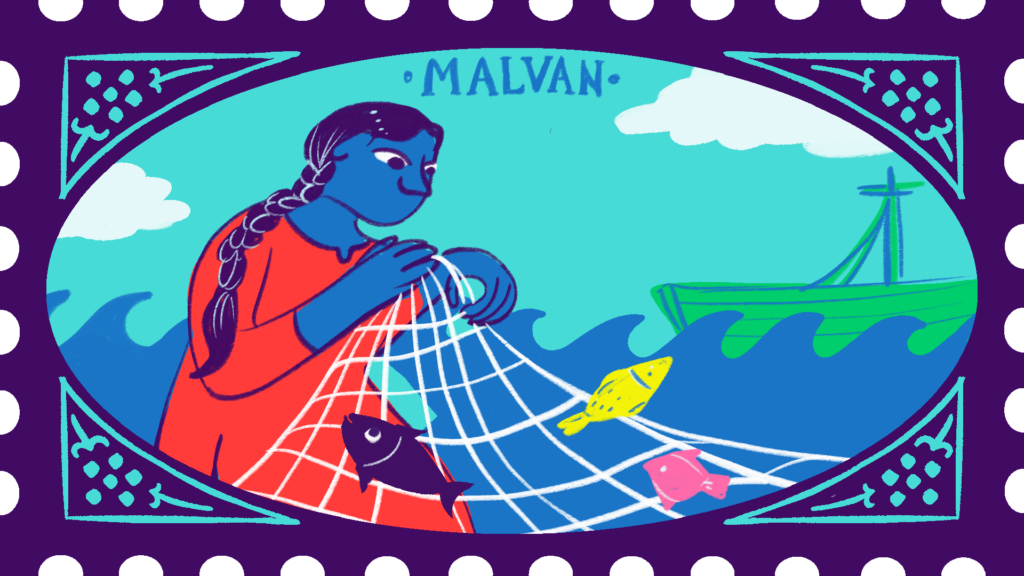
I recently participated in a Comic 101 workshop at ANIMELA, an indie animation festival at IIT Bombay. We were encouraged to freely decide on a topic for our individual comics. I initially planned to create something short and simple, but my mind kept drifting back to a memory from two years ago, to the coastal town of Malvan in Maharashtra, my hometown. I remember at the time I was curious about dolphins, and especially how the local community viewed them. My dad and I visited Devgad beach, a well-known tourist spot, where a fisher family told us that dolphins, or ‘gadya reda’ as they’re locally called, are both figures of celebration and concern. Tourists love them, but for the fisherfolk, they are most troublesome: the dolphins frequently damage fishing nets while trying to steal the catch, which causes a significant loss for the local communities. We visited the same family another morning when they were pulling fish from the nets. They shared their concerns about the precarious nature of their occupation, and the interlinked struggles of small fishing communities.
These conversations have stayed with me, and I kept thinking how I could turn it into a story. I wanted to craft a narrative depicting a fisherwoman talking to the fish she pulls from the net. But I was inclined to tell the story from the perspective of the fish, bringing a new angle to the conversation.
Since the workshop, I’ve begun working on this project. I’ve been making comics for some time now, but this workshop made me think differently of what it means to be a ‘comic creator’: I wanted to take the craft more seriously and connect with people who shared this interest. I’m sharing some snippets from the comic I’ve been working on. I hope you enjoy them.
Urvi Sawant
What a Puzzler
Your monthly brain teaser about gender, care, and politics with no perfect answers.
While discussing a project on women and work, we kept coming against a conundrum of what counts as rest. We’ve peeled back layers during team meetings but a simple, straightforward answer eludes us. Help us think through this month’s puzzler.
If a woman peels peas at the office in between work, does it count as work or leisure?
Write to us with your thoughts and stay tuned to next month’s newsletter for our hypotheses about women and matars.
Until next time, Behans.

What movie, book, art, sight or sound inspired you this month? Mail us your postcards at contact@behanbox.com using the template below (or simply write to us). We’ll share your missives with our readers on social media.

Join our community.
Want to explore more newsletters? Our weekly digest Behanvox and monthly Postscript invite you, the reader, into our newsroom to understand how the stories you read came to be – from ideation to execution. Subscribe to our work or visit our Substack channel for more.
Sign upAll illustrations by Urvi Sawant.
We believe everyone deserves equal access to accurate news. Support from our readers enables us to keep our journalism open and free for everyone, all over the world.
